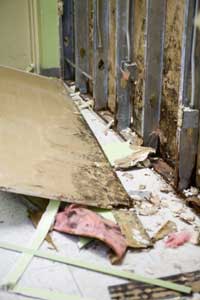Sick building syndrome (SBS) in relation to domestic exposure

Most studies on sick building syndrome (SBS) are cross-sectional and have dealt with symptoms among office workers. There are very few longitudinal cohort studies and few studies on SBS in relation to domestic exposures. The aim of this study was to investigate changes in SBS symptoms during the follow-up period and also to investigate changes in different types of indoor exposures at home and relate them to SBS symptoms in a population sample of adults from Sweden. We also wanted to investigate if there was any seasonal or regional variation in associations between exposure and SBS.
A random sample of 1,000 people of the general population in Sweden (1991) was sent a self administered questionnaire. A follow-up questionnaire was sent in 2001.
An increased risk for onset of any skin symptoms (risk ratio (RR) 2.32, 1.37-3.93), mucosal symptoms (RR 3.17, 1.69-5.95) or general symptoms (RR 2.18, 1.29-3.70) was found for those who had dampness or moulds in the dwelling during follow-up. In addition people living in damp dwellings had a lower remission of general symptoms and skin symptoms.
Dampness in the dwelling is a risk factor for new onset of SBS symptoms. Focus on indoor environment improvements in dwellings can be beneficial both for the inhabitants and the general population. Reducing dampness in buildings is an important factor for reducing SBS symptoms in the general population.
Reference:
Sahlberg B, Wieslander G, Norbäck D., Sick building syndrome (SBS) in relation to domestic exposure in Sweden – A cohort study from 1991 to 2001, Department of Occupational and Environmental Medicine, Uppsala University Hospital and Uppsala University, Uppsala, Sweden, Scand J Public Health. 2009 Oct 22.

Leave a Reply
You must be logged in to post a comment.